
Catalog excerpts
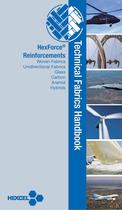
Woven Fabrics Unidirectional Fabrics Glass Carbon Aramid Hybrids Technical Fabrics Handbook HexForce® Reinforcements
Open the catalog to page 1
MANUFACTURING, SALES AND CUSTOMER SERVICE Seguin, Texas United States Customer Service Toll Free: 1 (866) 601 -5430 For European sales office numbers and a full address list,
Open the catalog to page 3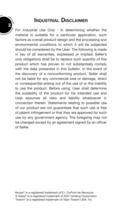
INDUSTRIAL DISCLAIMER For Industrial Use Only - In determining whether the material is suitable for a particular application, such factors as overall product design and the processing and environmental conditions to which it will be subjected should be considered by the User. The following is made in lieu of all warranties, expressed or implied: Seller's only obligations shall be to replace such quantity of this product which has proven to not substantially comply with the data presented in this bulletin. In the event of the discovery of a nonconforming product, Seller shall not be liable...
Open the catalog to page 4
Physical Properties of Selected PAN Carbon Fibers ... 16 SPECIALTY AND HYBRID COMPOSITE
Open the catalog to page 5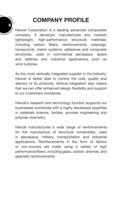
COMPANY PROFILE Hexcel Corporation is a leading advanced composites company. It develops, manufactures and markets lightweight, high-performance structural materials; including carbon fibers, reinforcements, prepregs, honeycomb, matrix systems, adhesives and composite structures, used in commercial aerospace, space and defense and industrial applications such as wind turbines. As the most vertically integrated supplier in the industry, Hexcel is better able to control the cost, quality and delivery of its products. Vertical integration also means that we can offer enhanced design...
Open the catalog to page 6
FABRIC SELECTION In selecting a woven fabric for industrial applications, a number of design parameters may be considered. These are broken down into four basic variables: yarn weight, thread count, weave pattern and fabric finish. The wide range of yarn weights provides the base for fabric design. Yarn weight, combined with thread count [the number of warp ends (lengthwise) and filling picks (widthwise) per inch] determines the strength, weight and thickness of Basic weaving concepts are utilized in the manufacture of fiber glass and high performance fabrics. The technology, however, is...
Open the catalog to page 7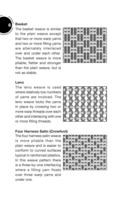
6 Basket The basket weave is similar to the plain weave except that two or more warp yarns and two or more lling yarns are alternately interlaced over and under each other. The basket weave is more pliable, atter and stronger than the plain weave, but is not as stable. Leno The leno weave is used where relatively low numbers of yarns are involved. The leno weave locks the yarns in place by crossing two or more warp threads over each other and interlacing with one or more lling threads. Four Harness Satin (Crowfoot) The four harness satin weave is more pliable than the plain weave and is...
Open the catalog to page 8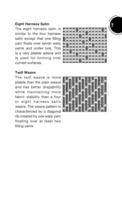
Eight Harness Satin The eight harness satin is similar to the four harness satin except that one lling yarn oats over seven warp yarns and under one. This is a very pliable weave and is used for forming over curved surfaces. Twill Weave The twill weave is more pliable than the plain weave and has better drapability while maintaining more fabric stability than a four or eight harness satin weave. The weave pattern is characterized by a diagonal rib created by one warp yarn floating over at least two lling yarns 7
Open the catalog to page 9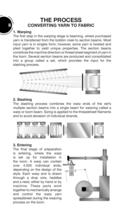
CONVERTING YARN TO FABRIC The first step in the warping stage is beaming, where purchased yarn is transferred from the bobbin creel to section beams. Most input yarn is in singles form; however, some yarn is twisted and plied together to yield unique properties. The section beams constitute the machine direction or thread sheet segment of yarn in the loom. Several section beams are produced and consolidated into a group called a set, which provides the input for the slashing process. The slashing process combines the warp ends of the set's multiple section beams into a single beam for...
Open the catalog to page 10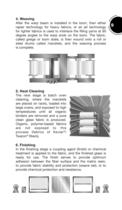
After the warp beam is installed in the loom, then either rapier technology for heavy fabrics, or air jet technology for lighter fabrics is used to interlace the filling yarns at 90 degree angles to the warp ends on the loom. The fabric, called greige or loom state, is then wound onto a roll or steel drums called mandrels, and the weaving process The next stage is batch oven cleaning, where the mandrels are placed on racks, loaded into large ovens, and exposed to high temperatures until all organic binders are removed and a pure clean glass fabric is produced. Organic, polymer-based fabrics...
Open the catalog to page 11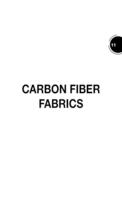
CARBON FIBER
Open the catalog to page 13
CARBON FABRICS Hexcel manufactures the most complete line of carbon fabrics and specialty reinforcements for the composite industry and offers a thorough line of globally certified aerospace products. Carbon fiber reinforcements, when properly engineered into the appropriate matrix, can achieve one of the strongest and most rigid composite structures available with significant weight savings when compared to metals In addition to the high strength-to-weight ratio, carbon fiber reinforcements are thermally and electrically conductive, have very low CTE and excellent fatigue resistance....
Open the catalog to page 14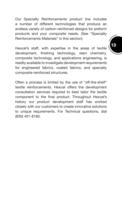
Our Specialty Reinforcements product line includes a number of different technologies that produce an endless variety of carbon-reinforced designs for preform products and your composite needs. (See "Specialty Reinforcements Materials" in this section) Hexcel's staff, with expertise in the areas of textile development, finishing technology, resin chemistry, composite technology, and applications engineering, is readily available to investigate development requirements for engineered fabrics, coated fabrics, and specialty composite-reinforced structures. Often a process is limited by the use...
Open the catalog to page 15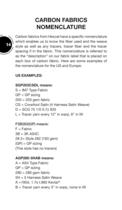
CARBON FABRICS Carbon fabrics from Hexcel have a specific nomenclature which enables us to know the fiber used and the weave style as well as any tracers, tracer fiber and the tracer spacing if in the fabric. This nomenclature is referred to as the "description" on our fabric label that is placed on each box of carbon fabric. Here are some examples of CS = Crowfoot Satin (4 Harness Satin Weave) L = Tracer yarn every 12" in warp, 6" in fill (This style has no tracers) 5H = 5 Harness Satin Weave B = Tracer yarn every 3" in warp, none in fill
Open the catalog to page 16All Hexcel Composites catalogs and brochures
-
Rail
5 Pages
-
Wind_Turbine_Blades
12 Pages
-
Automotive Product Focus
4 Pages
-
Winter_Sports_Brochure
6 Pages
Archived catalogs
-
HexTow® Chopped Fiber
2 Pages
-
HexMC®-i / C / 2000 / M81
2 Pages
-
HexMC®-i / C / 2000 / M77
2 Pages
-
Redux ® 100 series
4 Pages
-
HexPly ® M78.1
4 Pages
-
A1 & A10
4 Pages
-
HexMC
6 Pages
-
HexForce
12 Pages
-
MARKET BROCHURES-Rail
5 Pages
-
HexPly® M81
4 Pages
-
HexPly® M77
3 Pages
-
HexPly® M10R
4 Pages
-
HexPly® M47
4 Pages
-
HexPly® M49
4 Pages
-
HexWeb_Acousti-Cap
4 Pages
-
HexPly M9M10
4 Pages
-
CarbonFiber_SelectorGuide_us
4 Pages
-
HexPly® M34
4 Pages
-
HexForce? Fiber Glass Fabric
1 Pages
-
HexForce? Aramid Fabric
1 Pages
-
Redux epoxy film adhesive
4 Pages
-
Honeycomb
40 Pages








































